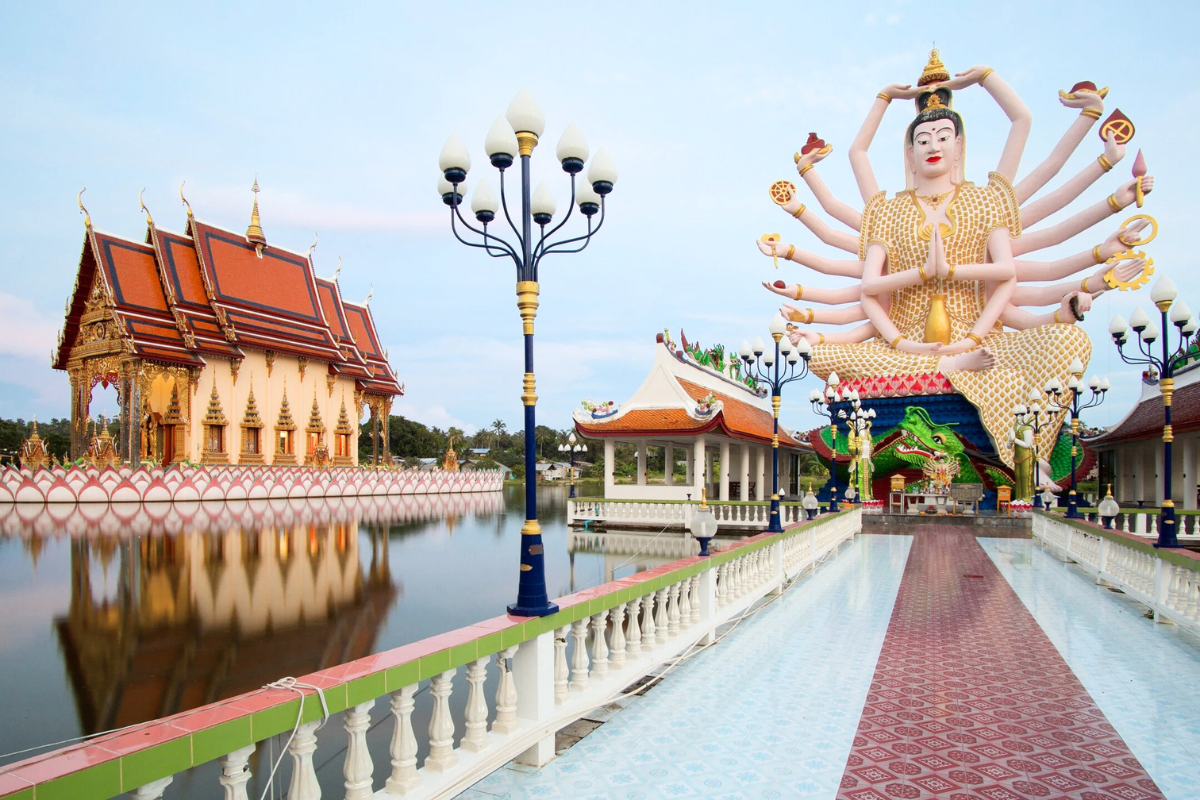Updated on August 13, 2025
Koh Samui, the second-largest island in Thailand, showcases a deeper cultural and historical sense from centuries-old traditions, spiritual beliefs, and community life. Temples, locally called wats, play a central role in shaping this identity. They are not only places of worship but also gathering points for festivals, rites of passage, and acts of charity.
Koh Samui is a magical place and it is one of the top tourist destinations in Thailand due to its magnificent beauty and tropical island environment. Among the many features that attract millions of tourists other than the white sandy beaches, is the culture of the people and Buddhism is a cultural religion that is well nurtured in the island.
A Guide to Temples in Koh Samui
One of the top things to do in Koh Samui aside from going to the beach is visiting temples. Koh Samui is home to more than 30 Buddhist temples, each with its own distinct meaning and story. Some are centuries old, preserving relics and murals, while other creations reflect evolving intricate styles. Visitors can expect a mix of serene lakeside settings, hilltop sanctuaries, and seaside pagodas that shine brighter under the sun.
Whether you are a devoted Buddhist, a cultural traveler, or simply seeking moments of quiet reflection, Koh Samui’s temples welcome all with an air of peace and reverence. Here is a curated list of five temples you should not miss in Koh Samui:
Wat Plai Laem
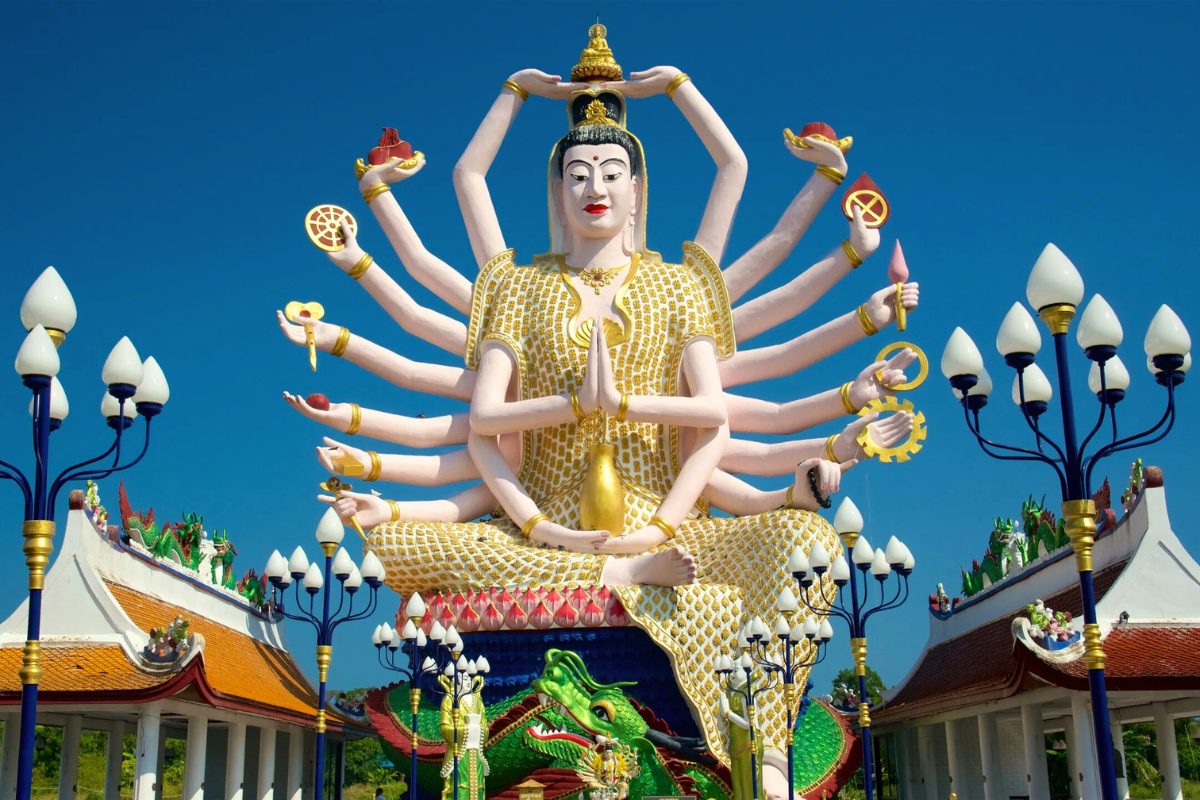
Significance: Wat Plai Laem is one of Koh Samui’s most vibrant and photogenic temples, embodying the island’s blend of Buddhist and Chinese influences. Its most iconic figure is the 18-armed statue of Guanyin, the Goddess of Mercy and Compassion, which symbolizes kindness and protection.
Location: Located in the northeastern part of Koh Samui, near Bang Rak and the Big Buddha Temple, it is easily accessible by road and close to the airport.
Description: The colorful murals and sculptures depict stories from Buddhist mythology, while the main hall houses a striking seated Buddha. The striking beauty of this temple is unmatched with many others around this place. It is located the Northeast coast of Koh Samui, and one feature that attracts many here is the giant white 18-arm statue of Guanyin. Guanyin is believed to the goddess of love and protection. The temple is beautifully surrounded by a lake making it even a more tranquil place to be. Those who make offerings to the temple are each given a bag of food to feed the fish in that lake.
The entry doors to the temple are beautifully and creatively designed to give it a magnificent appearance. There is an elaborate ceremonial hall in this place. The temple is open to visitors all day during the daytime and it’s most active during the Chinese festivals.
Wat Phra Yai (Big Buddha Temple)

Significance: The Big Buddha Temple is one of Koh Samui’s most famous landmark. Built in 1972, it houses a 12-meter-tall golden Buddha statue that can be seen from several kilometers away. The statue symbolizes steadfastness, purity, and enlightenment.
Location: Situated on a small rocky island connected to Koh Samui by a causeway in the northeastern area, near Bophut and Choeng Mon Beach.
Description: The main attraction of this temple is its golden and 12-meter seated statue of Buddha. The statue can be seen clearly at a distance of several kilometers as you approach the temple. The position that the Buddha sits with is just incredible, and the whole design work will just carry your imagination away. Built in 1972, this temple has remained the central attraction feature on this island.
Around the base area of the giant statue are vendors who sell religious artifacts, amulets and other types of souvenirs that you can take home with you. Striking designs of dragons design the staircase up to where the Buddha sits. It is indeed a must-visit place in Samui.
Wat Khunaram Temple
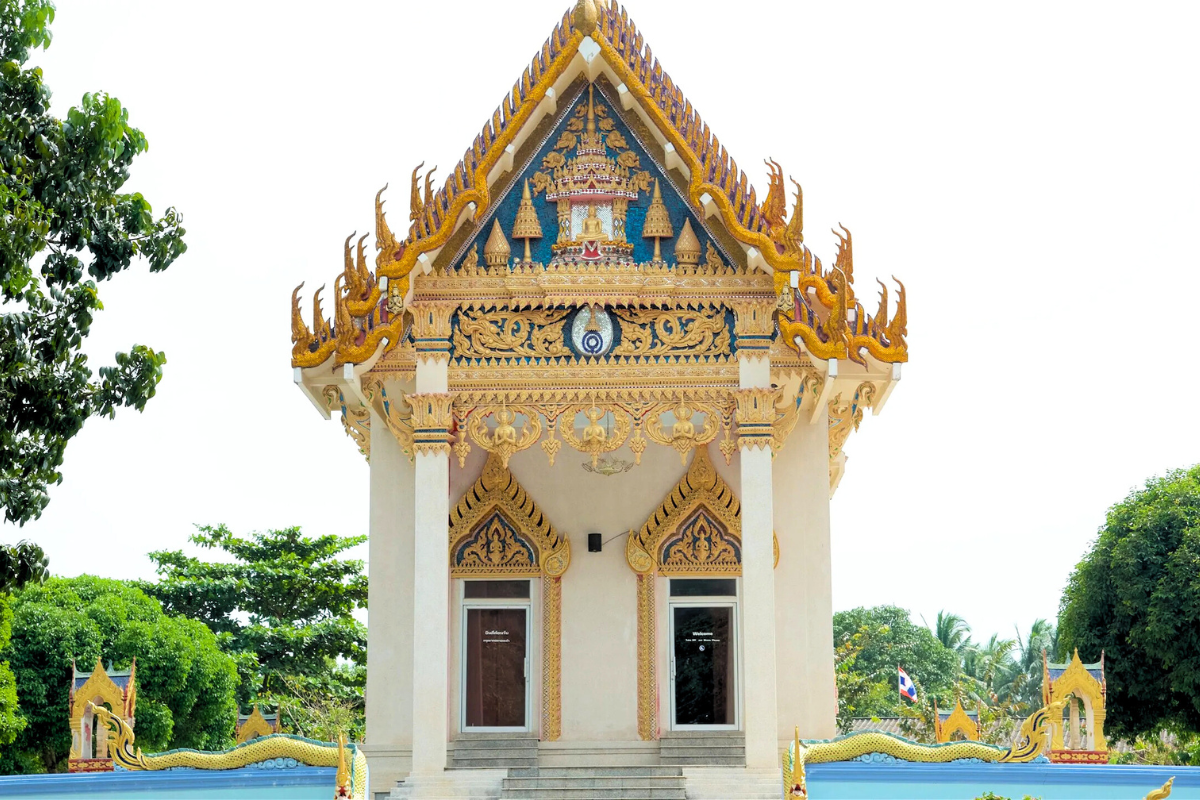
Wat Khunaram Temple
Significance: Wat Khunaram is best known for the mummified monk Luang Pho Daeng, a revered figure who passed away in 1973 while meditating. His preserved body is displayed in a glass case as a testament to Buddhist teachings on impermanence and mindfulness.
Location: Located in the island’s interior, between Lamai Beach and Hua Thanon village.
Description: The temple grounds are modest compared to others on the island, but the atmosphere is deeply contemplative. Visitors come to pay respects, make offerings, and learn about the monk’s life. The experience is humbling and offering a perspective on the Buddhist philosophy of detachment from the material world.
Not many people would love to come face to face with a dead man but this is the situation that you will find in Wat Khunaram temple. This is the body of the Luong Pordang, a monk who died 30 years ago in a seated meditative position. The most surprising thing about this Mummy Monk is he show very little decay signs. Apart from having this Mummy Monk, this is a typical Buddhist temple where locals come to pray and sell amulets and other Buddha artifacts.
Laem Sor Pagoda
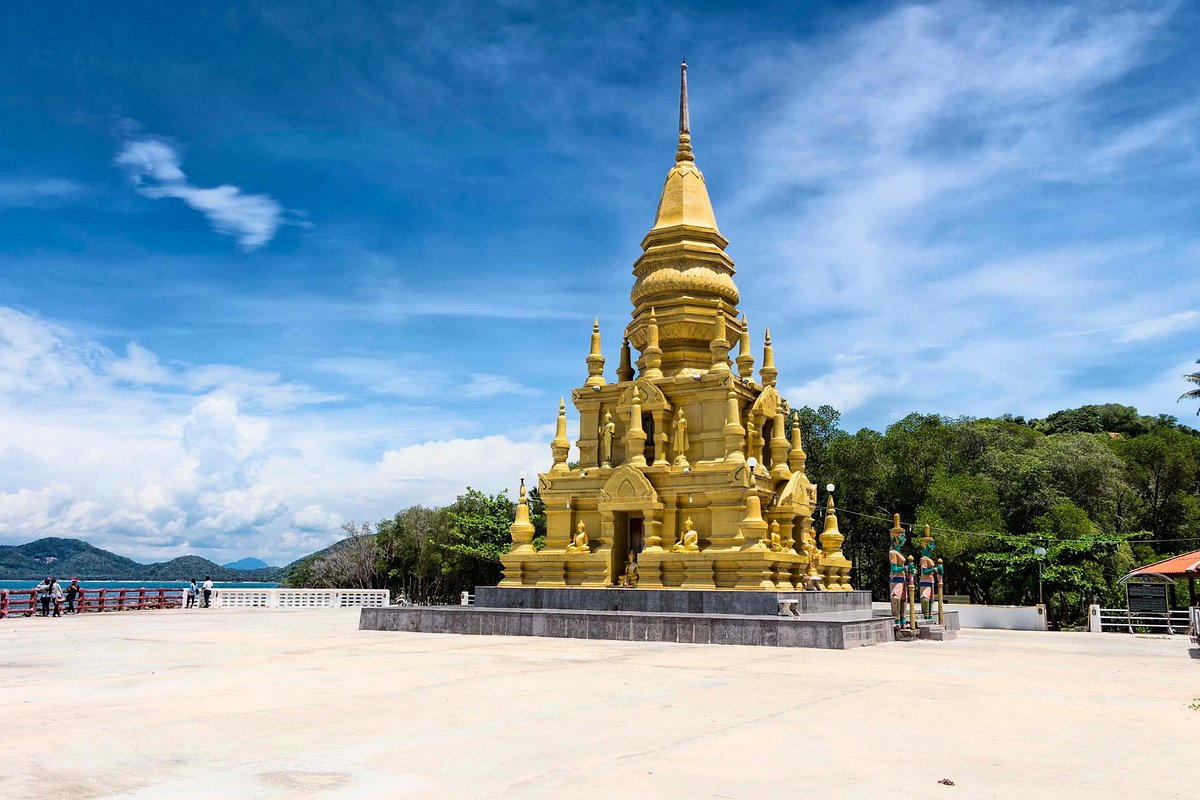
Significance: Laem Sor Pagoda stands as a serene coastal sanctuary with a golden hue that glows more under the tropical sun. It commemorates a monk who spent his final years here in meditation.
Location: Situated at the southern tip of Koh Samui, near Bang Kao Beach, it offers a peaceful escape from busier tourist areas.
Description: The pagoda’s bright golden tiles contrast beautifully with the deep blue sea and sky. Nearby, a small pavilion holds a wax figure of the monk, and the surrounding grounds invite quiet contemplation. The coastal breeze, coupled with the sound of waves, makes it a favorite for visitors seeking solitude.
The pagoda is part of a peaceful complex that includes meditation halls and shaded pavilions where locals come to pray and reflect. Its remote southern location offers visitors a rare sense of seclusion, making it ideal for moments of quiet contemplation.
Wat Ratchathammaram
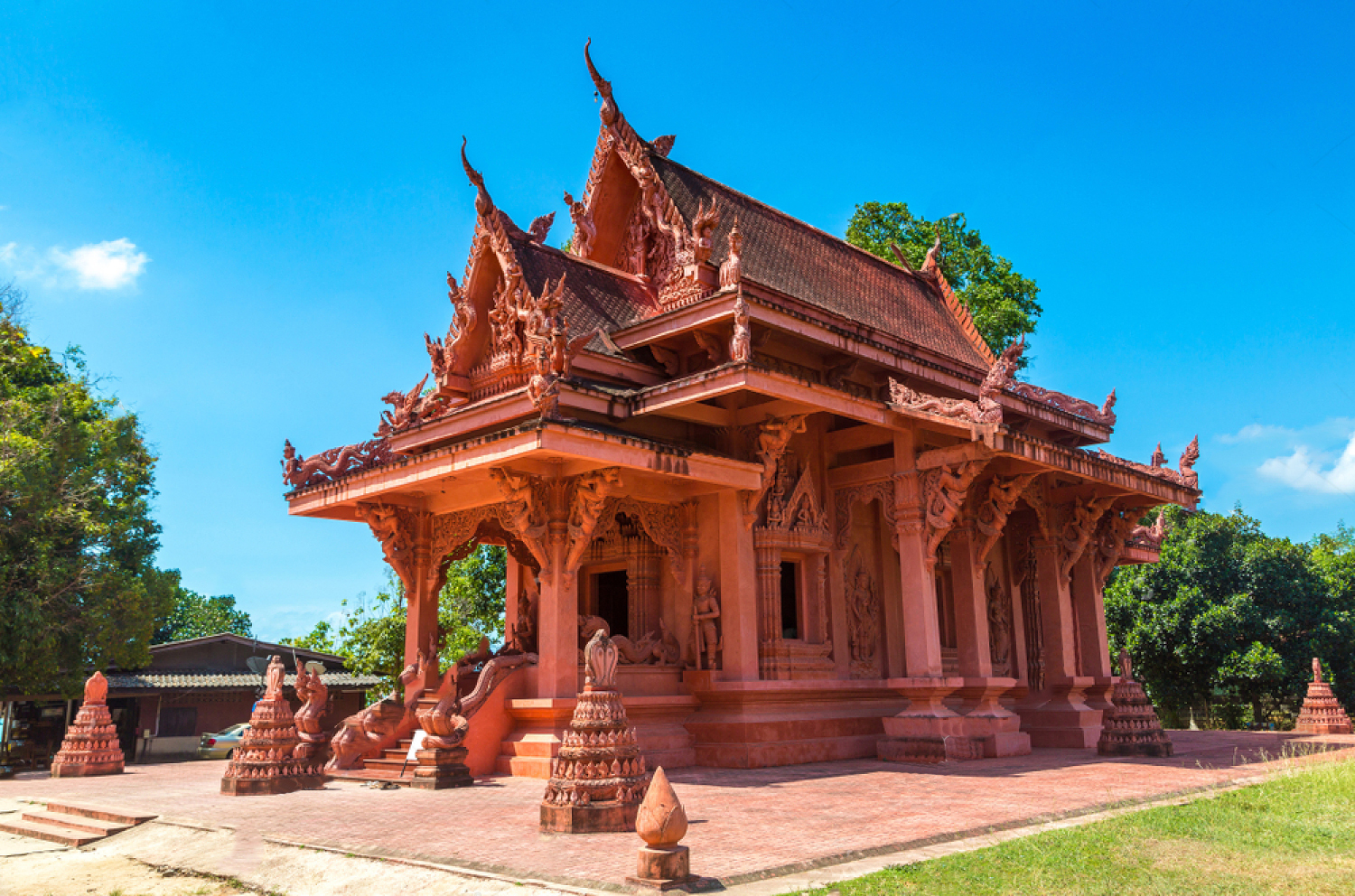
Significance: Also known as the “Red Temple” due to its unique terracotta-colored façade, Wat Ratchathammaram stands out for its intricate relief carvings and oceanfront location.
Location: Located on the southeastern coast between Hua Thanon and Lamai Beach.
Description: Unlike the gilded designs of most Thai temples, Wat Ratchathammaram’s monochromatic red stone exteriors highlight detailed carvings of Buddhist stories and mythical creatures. The temple overlooks the Gulf of Thailand, creating a picturesque setting for meditation and photography. The combination of artistry and coastal scenery makes it one of Koh Samui’s most distinctive temples.
Every inch of the temple’s exterior tells a story, from mythical creatures guarding its steps to intricate floral motifs on its walls. Overlooking the sea, it’s a place where art, spirituality, and natural beauty converge in perfect harmony.
Etiquette for Visiting Temples in Koh Samui
While temples in Koh Samui are open to all, they are first and foremost sacred spaces for worship. Visitors are highly encouraged to observe basic etiquette to show respect for local customs and maintain the sanctity of the sites.
- Dress Modestly: Wear clothing that covers shoulders and knees. Sarongs and shawls are often available at temple entrances, but bringing your own is a good practice.
- Remove Footwear: Shoes must be taken off before entering temple buildings, particularly in the main prayer hall.
- Demeanor: Keep your voice low, avoid disruptive behavior, and refrain from public displays of affection.
- Photography: Always ask before taking photos inside prayer halls or of monks. Flash photography is discouraged.
- Avoid Pointing Feet: In Thai culture, pointing your feet toward Buddha images or people is considered disrespectful. Sit with your feet tucked behind you when possible.
- Refrain from Touching Sacred Objects: Do not climb on statues, touch relics, or handle offerings unless invited by a monk.
- Observe Rituals Quietly: If a ceremony is taking place, maintain a respectful distance and observe in silence.
Exploring the temples of Koh Samui is an immersion into the island’s core culture. Each wat tells a story, not only of the Buddhist faith, but also of the community that has nurtured it for generations. By visiting these sacred sites with an open heart and mindful presence, travelers can gain a richer appreciation of Koh Samui—especially when combined with the serene comforts of private luxury villas that offer a peaceful retreat after days of cultural exploration. The temples stand as both guardians of tradition and sacred spaces of spiritual practice, inviting you to pause, reflect, and connect deeper with the island.
Related Article: 11 Must Visit Temples in Thailand
–
Photo by Expedia


